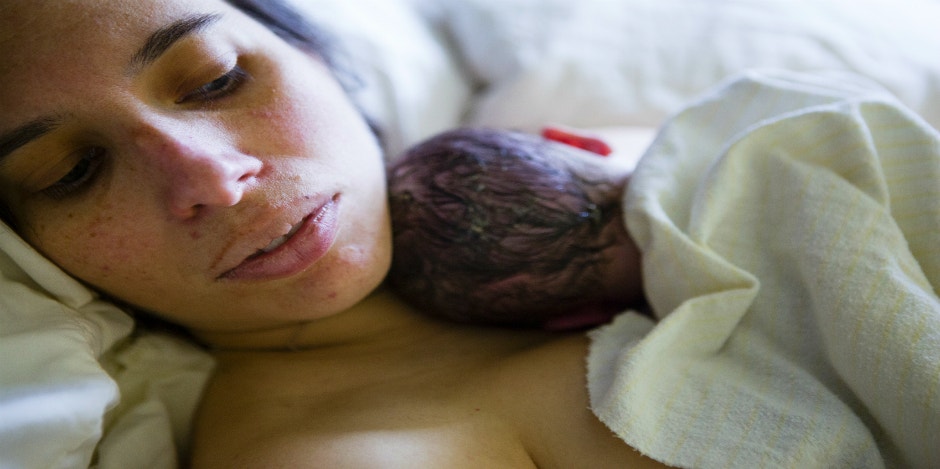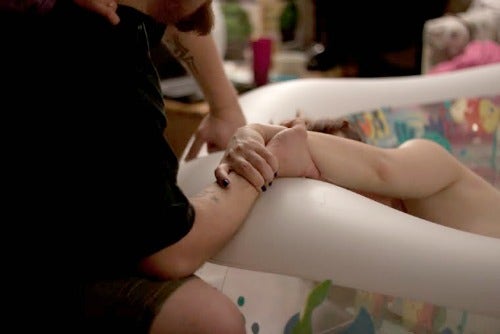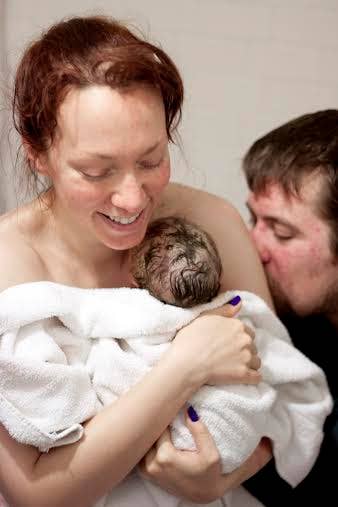I Ate My Placenta To Prevent PPD And This Is What Happened
Did it work?
 iStock
iStock I thought my body was awesome for growing another human being but in reality, the coolest thing about my pregnancy was my placenta. My body grew an entirely new organ that nourished my baby in utero. And because I'm hippie vegan health nut, it delighted me to think of all the chia seeds and kale and grapefruit that would go into it.
I bragged to my midwife about my placenta the way guys brag about their junk. Naturally, I knew I wanted to eat it because of postpartum depression (PPD).
I've struggled with depression and anxiety for as long as I can remember, so I knew that made me more susceptible to PPD. Plus, my mom grappled with it, too. The prospect of having it terrified me because even after nearly two decades of various meds and therapies, I still had incredibly hopeless, joyless, challenging days. Days when getting out of bed was my best accomplishment. And that was without a kid.
I prefer natural treatments over pharmaceutical ones and I knew my placenta's utility didn't stop with my baby — it contained all the extra hormones I'd been stewing while pregnant. Birth triggers a dramatic hormonal shift so it made perfect sense to me that putting those hormones back into my body would help me stave off depression. Plus, there was less chance of any negative side effects.
Some people were skeptical or critical, which further confirmed my decision to make a prescription my last, not first, resort. To me, it's akin to veganism being called an "extreme" diet yet ever-growing dependence on medications, often multiple types, has become the norm and isn't seen as extreme.
Vegan or not, I knew I would only ingest my placenta in encapsulated form. I'd read of people throwing it into smoothies or eating it like steak, and the thought repulsed me. Despite how they chose to eat it, my midwife attested to its efficacy among a portion of her clients. As luck had it, one of her apprentices did placenta encapsulation services. I was all set on the placenta tip.
I didn't give my placenta another thought until it splashed loudly in my toilet.
When I went into labor, everything was fine and manageable ... until it was time to push. After trying several different fruitless positions, my midwife suggested I go sit backward on the toilet. I labored there for a while as people added more hot water to my birthing pool.

"Do you feel anything different?" she called to me from the next room. I thought I may have felt something different, but I was feeling a lot of somethings that were all pretty indistinguishable apart from being intense AF. I reached down between my legs and was shocked when I touched the top of my baby's head.
"She's coming out!" I screamed. In a blur, my husband lifted me off the toilet to turn me around as my midwife darted into the room, catching my daughter before she landed in the toilet.
My midwife immediately began inspecting my baby. I stood, shaking, not believing how powerfully surreal everything was. Then, pretty much out of nowhere, my placenta dropped out and landed in the toilet, making a dramatic splash.
Although the toilet was clean because I'd cleaned it earlier that day, it was still a toilet. I shrieked and an apprentice swooped in to retrieve it while I went to shower, lie down, and wait for my baby.

Photos: Jen Marlow
A few days later, the apprentice arrived with my pills. She assured me she'd taken extreme measures to ensure its cleanliness, so I tried to focus its prospective health benefits, not about the fact that it had been in my toilet.
They were in a translucent plastic bottle. I shook a few into my hand and noticed they looked like fairly nondescript capsules, their only distinguishing feature being that they were the color of scabs. Aesthetics aside, I was cautiously optimistic the pills would work.
Like anything else, placenta pills need to be taken regularly to be effective. Initially, I struggled to take them consistently because of that whole newborn thing. Every time I cried to my husband he would remind me to take a placenta pill. If I was particularly weepy or angry, he'd encourage me to take a handful.
Even though they gave me violently compulsive burps that tasted horrible and unequivocally meaty (like liver and something else), I kept tossing them back. I continued to do so until I had a meltdown over something inane like Tupperware and threw the bottle in a rage.
The bottle exploded against the wall, scattering my placenta pills all over the floor that hadn't been swept in weeks. I knew my placenta-eating days were behind me.
Despite all this, I still developed debilitating PPD and depression. Thankfully, my best friend made it possible for me to see a doctor for medication. After a few weeks on antidepressants and anti-anxiety meds, I began to feel like myself and not like a zombie.
I'd been living in a haze of despair and the effect was like exiting a great fog. I saw how expansive the world is, and I was happy and grateful instead of scared.
Ultimately, I can say with certainty that eating my placenta didn't prevent my postpartum depression, but I also can't say whether or not it mediated or lessened it. It may have; I simply don't know and I'm inclined to think its benefits, if any, were minimal.
My depression was so powerful that it required pharmaceutical help. If I had it to do over again, I would still try my placenta pills but because I'm so susceptible to depression and anxiety, I'd use it as a supplement for a doctor's prescription treatment.
One thing I know for sure: I'm just happy I didn't have my baby in the toilet.
